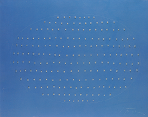Abstract
The philosopher as necromancer is a commonplace medieval reality. This paper traces how William of Malmesbury invents the figure of a necromantic philosopher in the person of Gerbert of Aurillac. This new image of the philosopher, which William elaborates using many classical and religious reminiscences, gave personal expression, at the beginning of the 12th century, primarily to fears generated by new knowledge arriving from Arabic sources. As a figure inspiring terror, however, the necromantic philosopher did not exist for long. As the second part of the paper will argue, his disappearance owes nothing to scientific progress or religious enlightenment, but is rather connected with the emergence of a new cycle of legends. Virgil is their protagonist: in the new legends that begin to circulate in the late 12th century, the Latin vates becomes a kind of magician. He uses his magical powers, however, not so much for his own benefit as to help out his adopted hometown of Naples. Thanks to Virgil, or rather thanks to the new Neapolitan stories about him, the formerly evil necromantic philosopher turns into a good necromantic philosopher, whose newly positive image colours the representation of many great philosophers in the following centuries.Except where otherwise noted, the content of this site is licensed under a Creative Commons Attribution-ShareAlike 4.0 International (CC BY-SA 4.0).
Authors retain copyright of their work. The CC BY-SA 4.0 licence allows readers to copy and redistribute the material in any medium or format, and to remix, transform, and build upon the material for any purpose, even commercially, as long as the original author is credited and as long as any works that are derived from the original are distributed under the same terms.
Metrics
Metrics Loading ...

